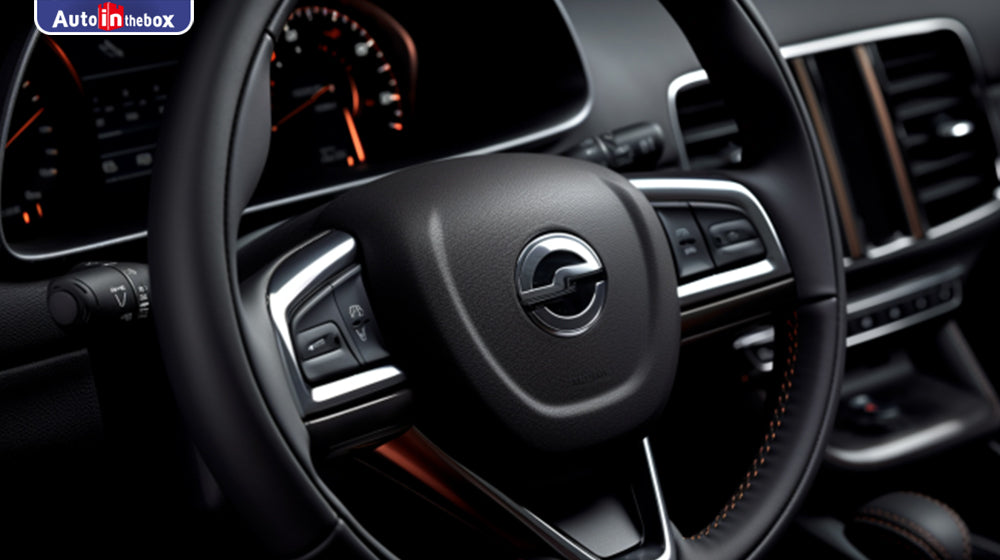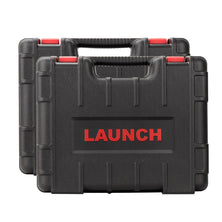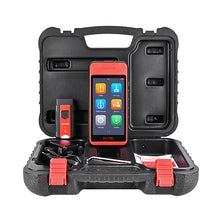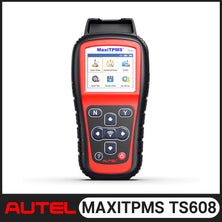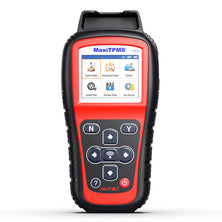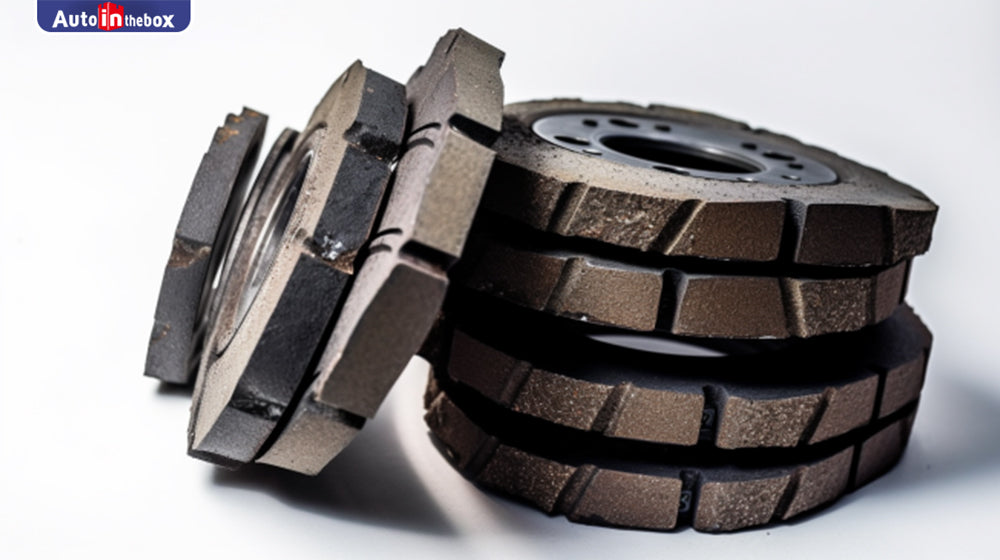
What happens when brake pad wear in the vehicle?
Brake pad wear in a vehicle refers to the gradual deterioration of the brake pads, essential braking system components. As the brake pads are subjected to friction and heat during braking, they eventually wear down, reducing their effectiveness in stopping the vehicle.
Recommended 2023 top car diagnostic tool:Autel IM608II,Launch pro5,Launch IMMO elite,Launch PADVII
Friction and Heat: When the brake pedal is applied, the pads press against the brake rotors, creating heat-related conflict. Over time, this continuous friction and heat cause the brake pads to wear down gradually.
Time and Usage: The lifespan of brake pads is influenced by the duration and frequency of their use. The more frequently the brakes are applied and the longer they are engaged, the faster the pads will wear.
Driving Conditions: Aggressive driving, such as sudden braking, can accelerate brake pad wear. Additionally, driving in hilly or mountainous terrain, where brakes are frequently used for extended periods, can increase wear.
Environmental Factors: Environmental conditions, such as excessive moisture or road debris exposure, can contribute to accelerated brake pad wear. Water can cause corrosion and deterioration of the brake pad material, while debris can cause uneven wear or damage.
It is essential to regularly inspect and maintain the brake pads to ensure optimal performance and replace them when necessary to maintain the safety and effectiveness of the braking system.
Signs and Warning Signals of Brake Pad Wear in a Vehicle:
- Squeaking or Squealing Noise: One of the common signs of brake pad wear is a high-pitched squeaking or squealing noise when applying the brakes. This noise is typically caused by the brake pad wear indicator, a small metal tab designed to contact the rotor when the brake pads become too thin.
- Grinding or Metal-on-Metal Noise: If the brake pads have worn down significantly, you may hear a grinding or metal-on-metal noise when braking. This indicates that the brake pads have completely worn out, and the metal backing plate is now making direct contact with the brake rotor. Immediate action is required as this can cause damage to the rotor.
- Reduced Brake Responsiveness: As brake pads wear down, you may notice a decrease in brake responsiveness. It may take longer for the vehicle to come to a complete stop or require increased pressure on the brake pedal.
- Vibrations or Pulsations: Worn brake pads can cause vibrations or pulsations in the brake pedal when braking. This may indicate uneven wear or warped brake rotors, which can occur when worn brake pads are not replaced promptly.
- Warning Light: Many modern vehicles have a brake wear indicator system that triggers a warning light on the dashboard when the brake pads are due for replacement. If the brake pad warning light illuminates, it is essential to have the brake pads inspected and replaced immediately.
- Increased Stopping Distance: As brake pads wear down, the vehicle's stopping distance may increase. If you notice that it takes longer to bring the car to a halt or the brakes feel less effective, it could be a sign of worn brake pads.
Suppose any of these signs or warning signals are present. In that case, it is crucial to have the brake pads inspected and replaced by a qualified mechanic to ensure safe braking performance and prevent further damage to the braking system.
Impact of Brake Pad Wear in a Vehicle on Road Safety:
- Reduced Braking Performance: As brake pads wear down, their friction material becomes thinner, resulting in reduced braking performance. This can lead to longer stopping distances and compromised ability to bring the vehicle to a quick and controlled stop, increasing the risk of accidents, especially in emergencies.
- Increased Risk of Brake Failure: Excessive brake pad wear can eventually lead to failure. If the brake pads wear down to the metal backing plate or the brake fluid levels are low due to worn pads, the braking system may not function properly, making it difficult to slow down or stop the vehicle safely.
- Compromised Control and Stability: Worn brake pads can affect the vehicle's control and stability during braking. Insufficient friction between the pads and rotors can result in uneven braking force distribution, causing the vehicle to pull to one side or experience instability. This can make maintaining control over the car challenging, especially on slippery or in emergencies.
- Increased Risk of Accidents: When brake pads are worn, the likelihood of accidents and collisions can significantly increase. Longer stopping distances, compromised braking performance, and reduced control over the vehicle pose a higher risk for rear-end collisions, crashes at intersections, and other accidents that require sudden and effective braking.
- Premature Wear of Other Brake Components: Worn brake pads can strain other brake components, such as rotors and calipers. As the worn brake pads make less effective contact with the rotors, the remaining members have to work harder, leading to increased wear and potential damage. This can result in more extensive and costly repairs to the braking system.
It is crucial to regularly inspect and maintain the brake pads to ensure they are in good condition. Prompt replacement of worn brake pads is necessary to maintain optimal braking performance, ensure road safety, and minimize the risk of accidents.
Prevention and Maintenance of Brake Pad Wear in a Vehicle:
- Regular Inspections: Conduct regular visual inspections of the brake pads to check for signs of wear. Look for thickness, even wear across the place, and any visible damage. Inspect the brake system during routine maintenance or whenever an abnormality is noticed.
- Follow Manufacturer's Recommendations: Adhere to the manufacturer's recommended maintenance schedule for the vehicle's braking system. This may include specific intervals for brake pad inspection and replacement. Following these guidelines ensures timely maintenance and helps prevent excessive wear.
- Gentle Driving Habits: Avoid aggressive driving behaviors, such as sudden and excessive braking. Abrupt stops put more stress on the brake pads, causing them to wear out faster. Maintain a safe following distance to allow for gradual and smooth braking.
- Avoid Overloading: Avoid overloading the vehicle beyond its recommended capacity. Excess weight strains the brakes, leading to accelerated brake pad wear. Refer to the vehicle's owner's manual for the recommended weight limits.
- Brake Fluid Maintenance: Regularly check the brake fluid levels and ensure they are within the manufacturer's recommended range. Contaminated or low brake fluid can affect brake pad performance and contribute to increased wear. Follow the recommended brake fluid replacement intervals.
- Quality Brake Pads: Install high-quality brake pads recommended for your vehicle. Opt for reputable brands and consult a trusted mechanic for the best options. Quality brake pads are more durable and offer better performance, reducing the likelihood of premature wear.
- Clean Braking System: Keep the braking system clean from dirt, debris, and corrosion. Regularly wash the wheels and remove any accumulated grime that can affect the brake pads' performance. Use appropriate cleaning methods and products recommended for the braking system.
- Professional Maintenance: Seek professional inspection and maintenance of the braking system. A qualified mechanic can accurately assess brake pad wear, measure thickness, and provide recommendations for replacement or other care. They can also inspect other brake components for any potential issues.
By following these preventive measures and maintaining the braking system regularly, you can extend the lifespan of brake pads, optimize their performance, and ensure safe and reliable braking in your vehicle.
Brake Pad Replacement and Maintenance for Brake Pad Wear in a Vehicle:
- Inspection and Assessment: When signs of brake pad wear are present, such as squeaking, grinding, or reduced braking performance, schedule a review with a qualified mechanic. They will assess the condition of the brake pads, measure their thickness, and determine if replacement is necessary.
- Brake Pad Replacement: If the brake pads are worn beyond their recommended thickness or significant damage is present, they must be replaced. The mechanic will remove the old brake pads, clean the caliper and rotor surfaces, and install new brake pads according to the manufacturer's specifications.
- Rotor Resurfacing or Replacement: During brake pad replacement, it is essential to assess the condition of the brake rotors. If the rotors are worn, uneven, or damaged, they may need to be resurfaced or replaced. Resurfacing involves removing a small amount of material from the rotor's surface to ensure a smooth and flat contact area for the new brake pads.
- Brake System Lubrication: Proper lubrication of brake system components is crucial for optimal performance and prevention of noise and vibration. The mechanic may apply lubricant or brake grease to specific contact points, such as the caliper slides and pad backing plates, to ensure smooth operation and reduce friction.
- Brake Fluid Replacement: During brake pad replacement, it is an opportune time to consider flushing and replacing the brake fluid. Brake fluid absorbs moisture over time, which can degrade its performance and affect the braking system. Consult the vehicle's owner's manual or a mechanic for the recommended brake fluid replacement interval.
- Break-In Period: After brake pad replacement, follow the recommended break-in procedure provided by the brake pad manufacturer. This typically involves controlled stops to gradually transfer the friction material onto the rotor surface and establish proper braking performance. Adhering to the break-in procedure ensures optimal braking effectiveness and longevity of the new brake pads.
- Ongoing Maintenance: Regularly inspect and maintain the brake system to ensure continued performance and safety. This includes periodic checks for brake pad wear, rotor condition, brake fluid level, and signs of any abnormalities. Promptly address any issues or unusual brake-related symptoms by seeking professional assistance.
By following these steps and relying on professional expertise, you can ensure the proper replacement and maintenance of brake pads in your vehicle. This promotes optimal braking performance, enhances safety, and prolongs the lifespan of the braking system components.
